How to Make Ricotta From Whey
This post may contain affiliate links, view our disclosure policy for details.
In this post, we will learn how to make ricotta from whey. After making cheese, we are left with a good amount of whey, making ricotta from it is simple and quick. This homemade ricotta from whey is delicious and very simple to make!
There are many things you can do with the whey that is left after you make cheese at home. Honestly, I usually do one of two things… I either give it to the animals or use it when making bread as a replacement for the water in the recipe. Recently, I found out that before I use it for those things, I can make one more kind of cheese from it — Ricotta.
This recipe is good whether you are using store-bought milk or raw milk, goat milk, or cow’s milk… I am using my raw goat’s milk to make most of my homemade cheeses and in this post, I’ll be using the whey from this milk to show you how to make ricotta from whey.
How to Make Ricotta From Whey…
It takes some serious effort to keep goats (I raise Lamancha goats) alive here in NC. I am not sure if everyone all over the country experiences this but here in NC goats die like flies. We have very hot and very humid summers. The perfect ground for so many parasites. Not only are they abundant, they are also aggressive and very resistant to medications.
Anyway, this is a topic for another post, but what I am trying to say is that when I do get delicious goat milk from my goats, you can bet that I am going to do the best I can to use it to the fullest. Here are some of the ways that I use my goat milk…
- Make goat milk soap
- Make feta cheese
- Make soft, spreadable cheese
- Make hard goat cheese (a recipe that I’ve learned in the mountains of Israel!)
- Make yogurt
- And I also can my milk!
What Kind of Whey Can Be Used…
You can use whey from goat’s milk, cow’s milk, sheep’s milk… However, This ricotta can only be made from whey that was produced from making cheese without acids like vinegar, lemon juice, or citric acid. If you used vinegar to make your cheese, your cheese produced whey, and you are here trying to follow this recipe to make ricotta, this will not work. Take a moment to read some of the comments below… Lots of people tried this, some with success and some not so much. After a few years, that’s the conclusion we came to.
What is Ricotta Cheese…
Ricotta cheese is a creamy, white, mild, and soft texture cheese. Traditionally, Italian cheese makers made ricotta from whey left behind after making Mozzarella or Provolone cheese. Ricotta consists of delicate granules that are moist and is very rich in calcium.
You can use ricotta cheese in pasta, especially filled pasta like lasagna, ravioli, and tortellini. You can season it and add it to salads or sandwiches, and it is so good as a dessert with some honey, fruit, chocolate, or jam.
Tools That We Are Going to Need…
- Stainless pot – it’s best if it’s a heavy bottom pot so the whey doesn’t scorch when we heat it.
- A slotted spoon – or another stainless spoon for stirring the whey.
- A cheese thermometer – or any other kind of thermometer that can read to 200 degrees F.
- 1/4 cup measuring cup – to measure the vinegar.
- A colander – or you can use a strainer or a bowl. We will line it with the cheesecloth before we hang the cloth. If you don’t want to catch the whey then you can use a strainer or a colander and place it in the sink.
- Cheesecloth – let me tell you a secret… You don’t need a fancy cheesecloth! Your local Walmart sells a pack of five or so flour sack tea towels for something around $5. I am linking to a “proper” cheesecloth in case you are not sure what a cheesecloth is. The flour sack towels that I get at my local Walmart work better than a cheesecloth in my opinion and they are so cheap! It’s all you need. Also, make sure to have a string of some sort (I use yarn) to tie and hang the cheesecloth with.
For a comprehensive list of cheesemaking equipment and ingredients, make sure to visit my cheesemaking equipment post. Ok, we are ready to go through this ricotta from whey tutorial. You’ll find all the steps below, however, if you want to have a better understanding of the cheesemaking process, please visit my How to Make Cheese at Home post.
Ingredients…
- Whey
- Vinegar – apple cider or white. In this tutorial, I used my apple scrap vinegar.
- Salt – sea, cheese, or Kosher
Making Ricotta From Whey…
Step one – heat the whey. Add the whey to a heavy-bottomed pot, and set on the stovetop. Turn the heat to medium and slowly heat the whey to 195 degrees Fahrenheit while stirring frequently so it doesn’t scorch.
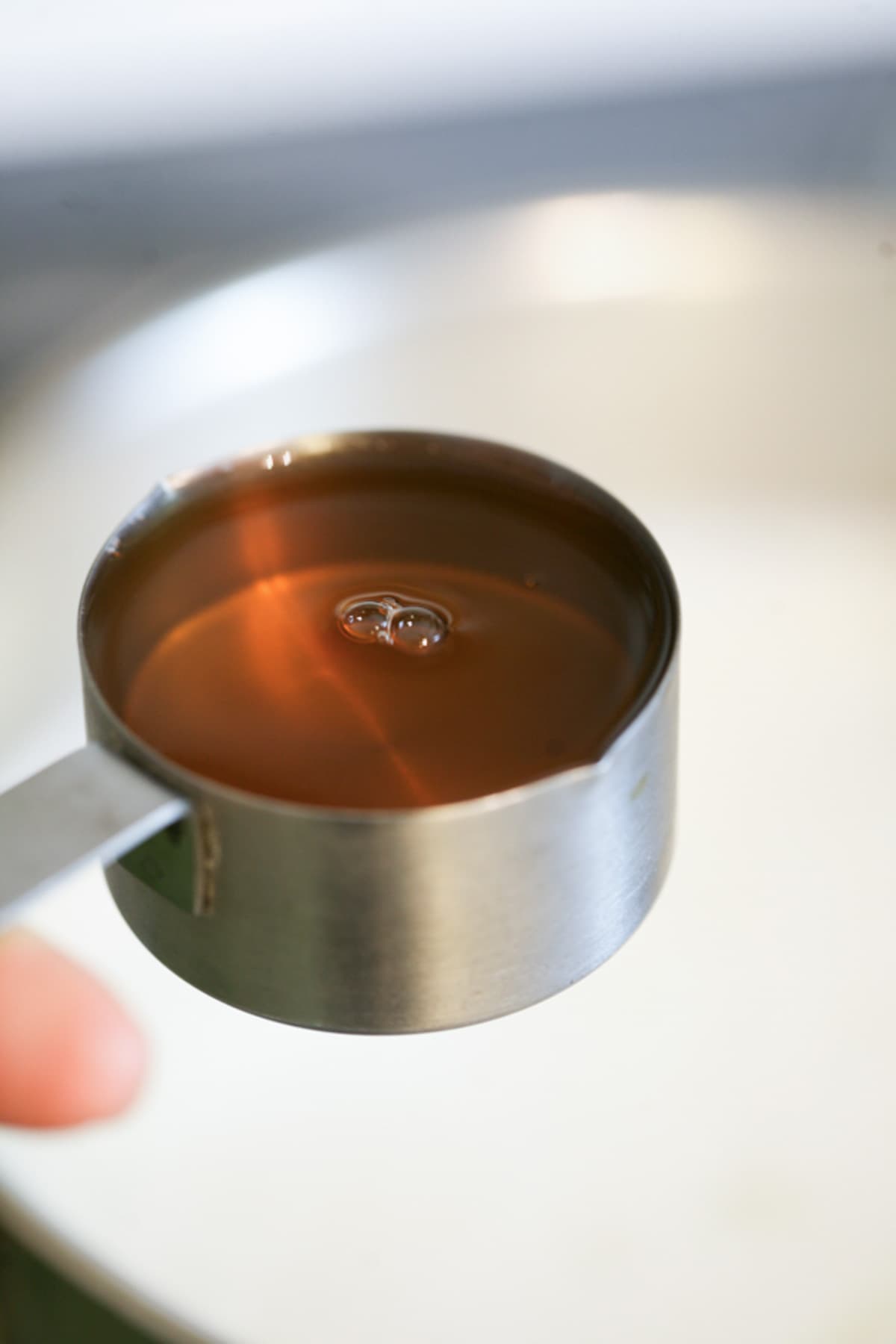
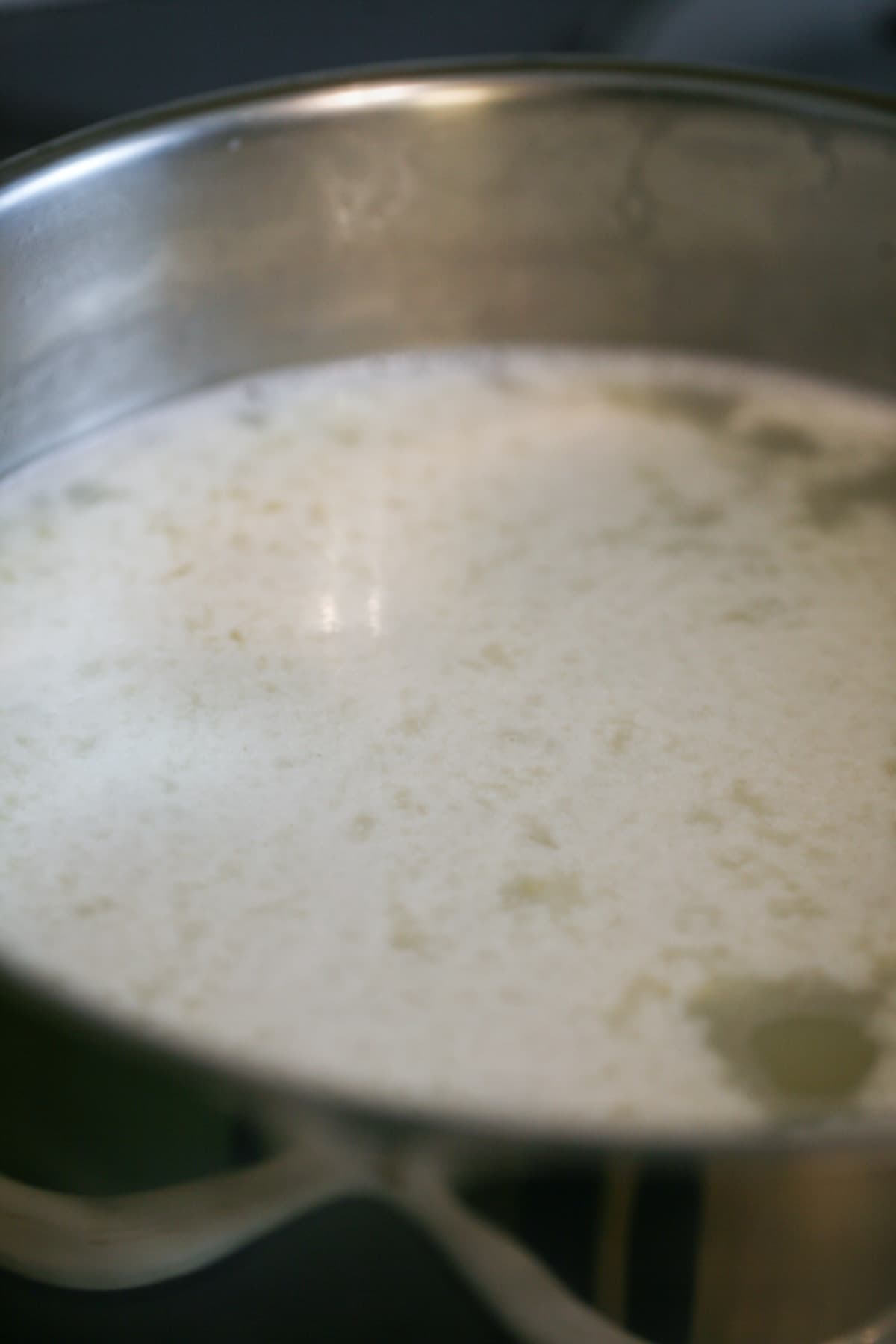
Step two – add the vinegar. Remove the pot from the heat and add the vinegar. Stir it in for a minute or so. You’ll see that the whey starts to curdle. Let it sit for a few minutes.
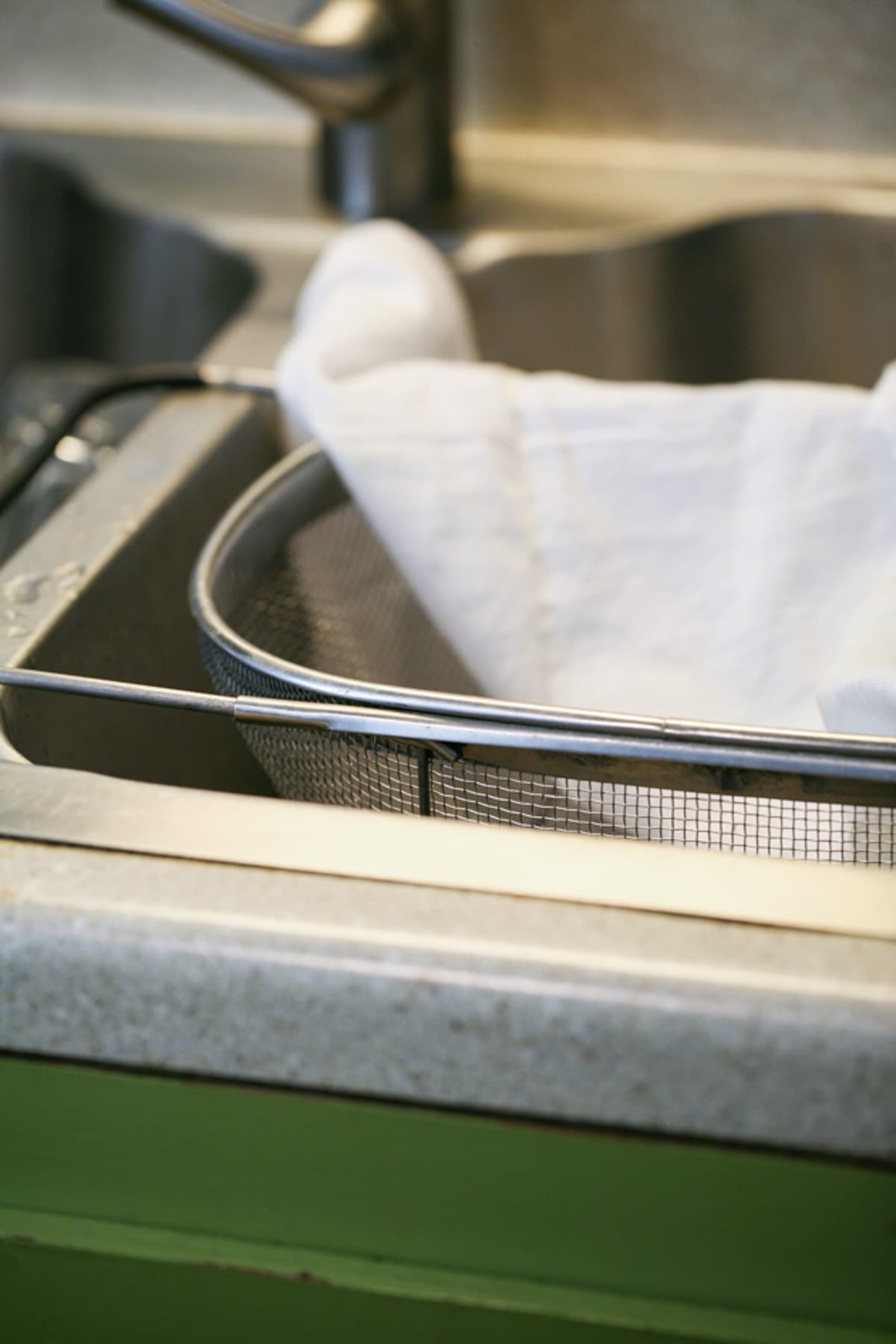
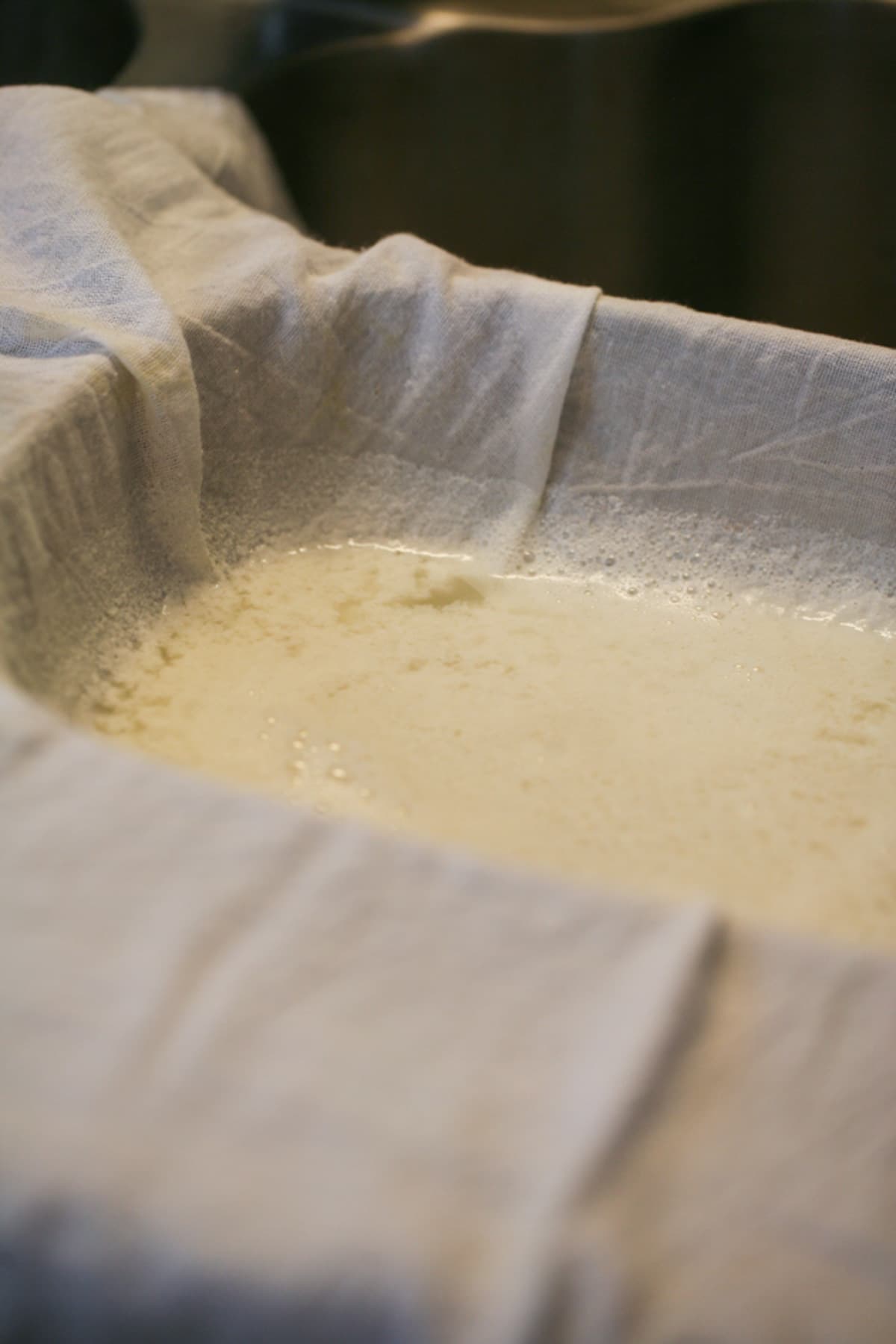
Step three – strain the whey. Place a strainer over the sink or over a bowl if you want to catch the liquid and line it with a cheesecloth or a flour sack towel. Pour the curdled whey onto the flour sack and let the liquid drain for a few minutes.
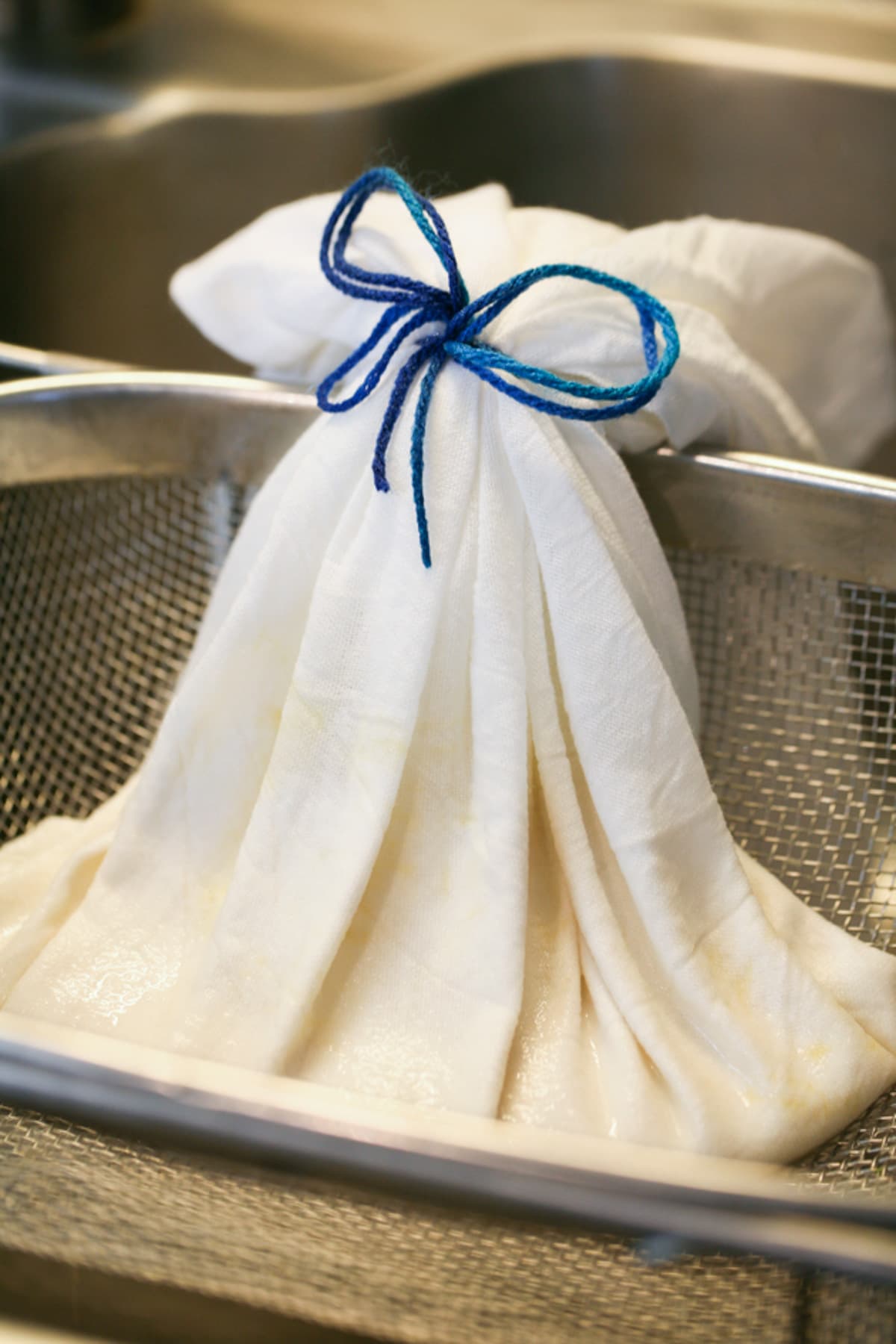
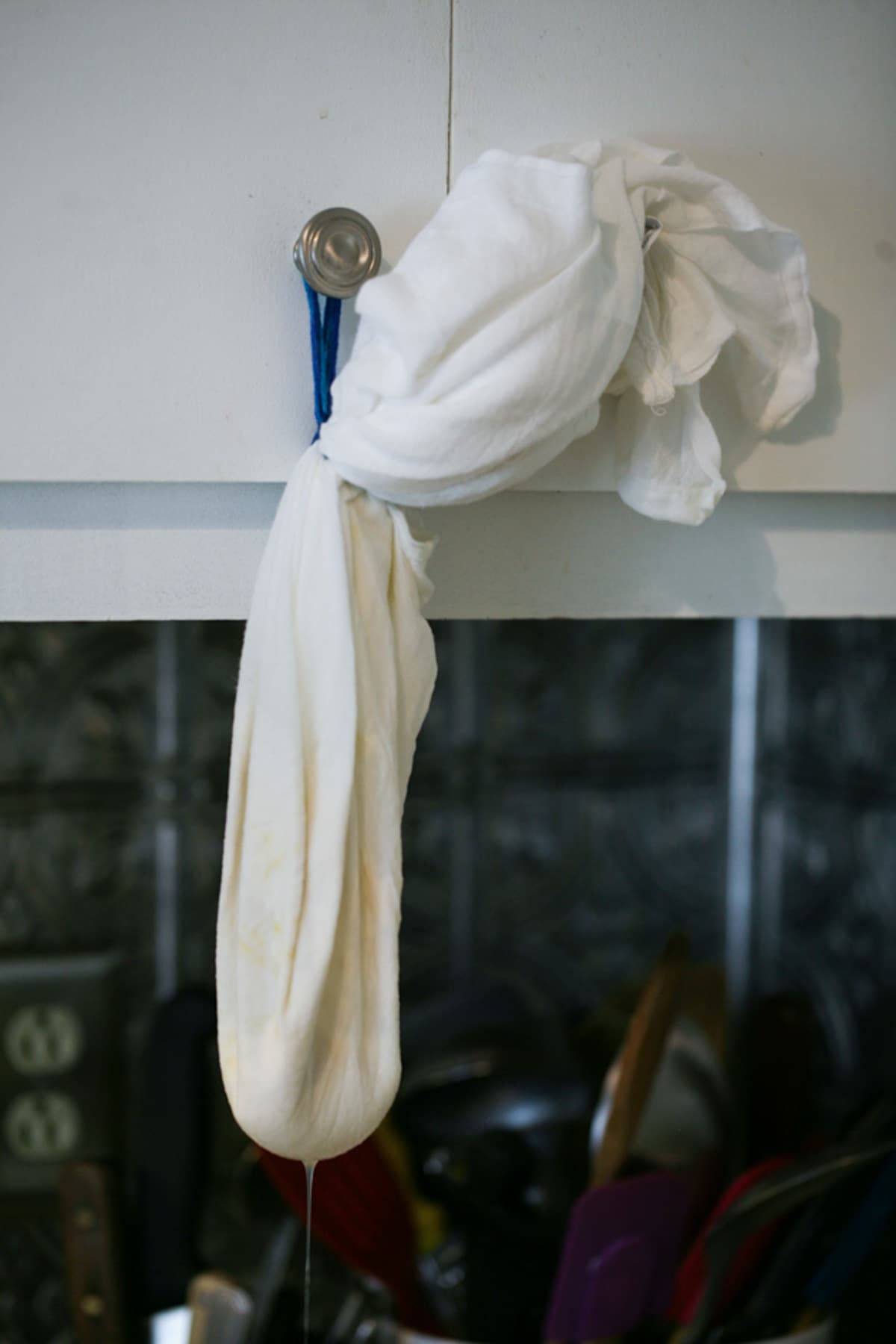
Step four – hang. Gather the ends of the flour sack and tie them. Then hang the flour sack on one of your kitchen cabinets with a bowl underneath it to catch the remaining whey. Depending on the amount of whey you are processing, you might need to leave the bag hanging from one hour to five or six or seven hours.
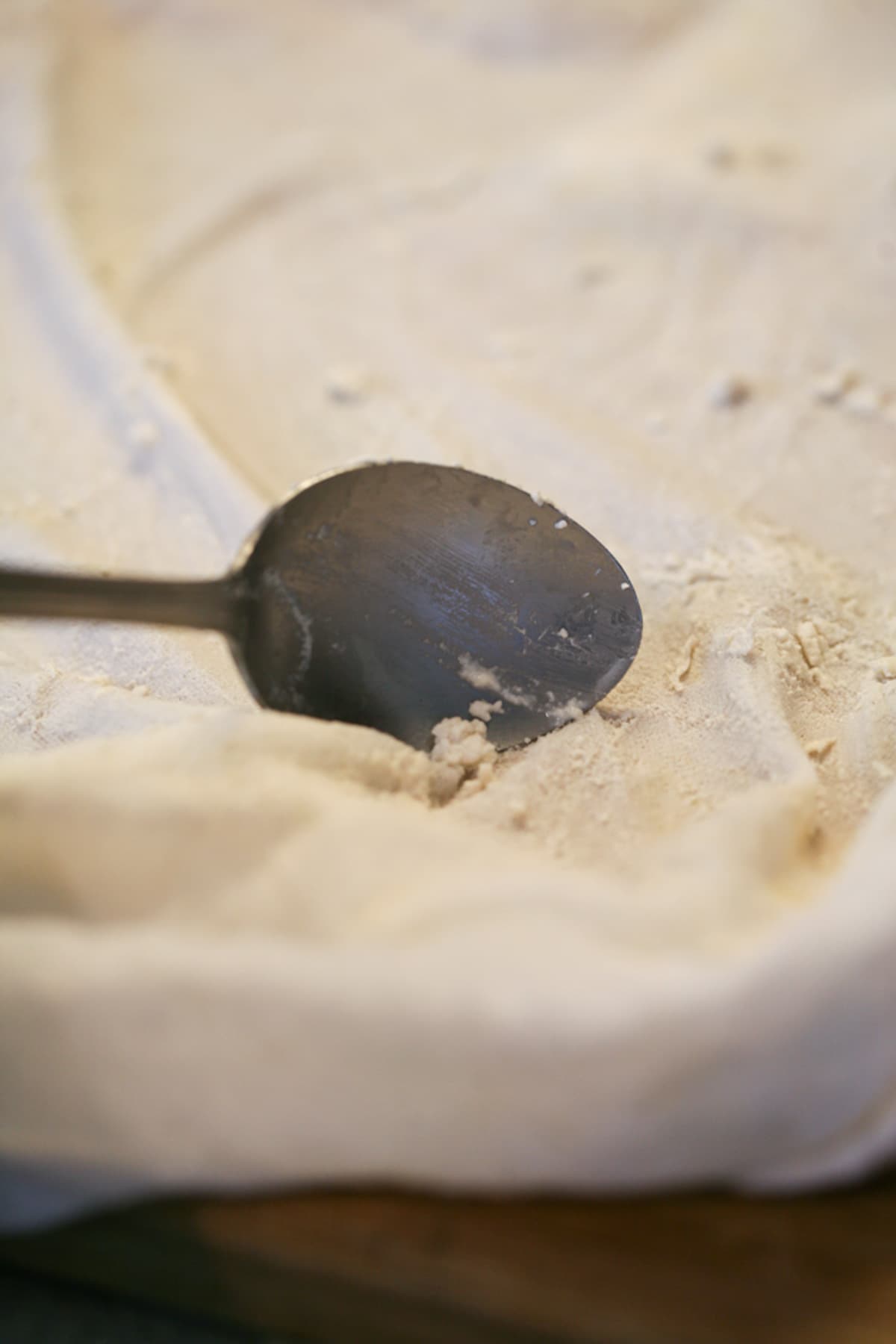
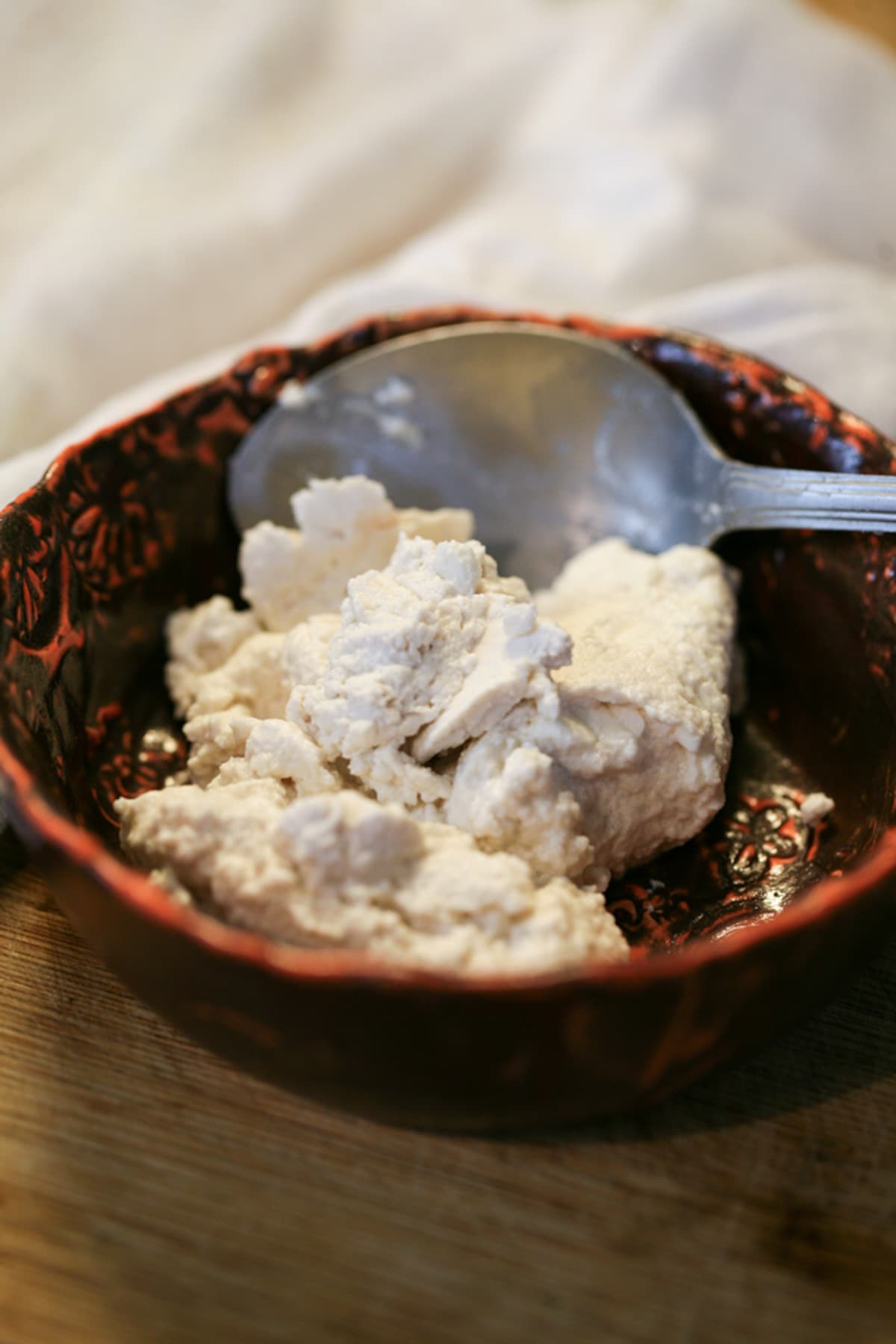
Step five – remove the cheese from the flour sack. Open your flour sack and use a spoon to scrape the soft ricotta into a bowl.
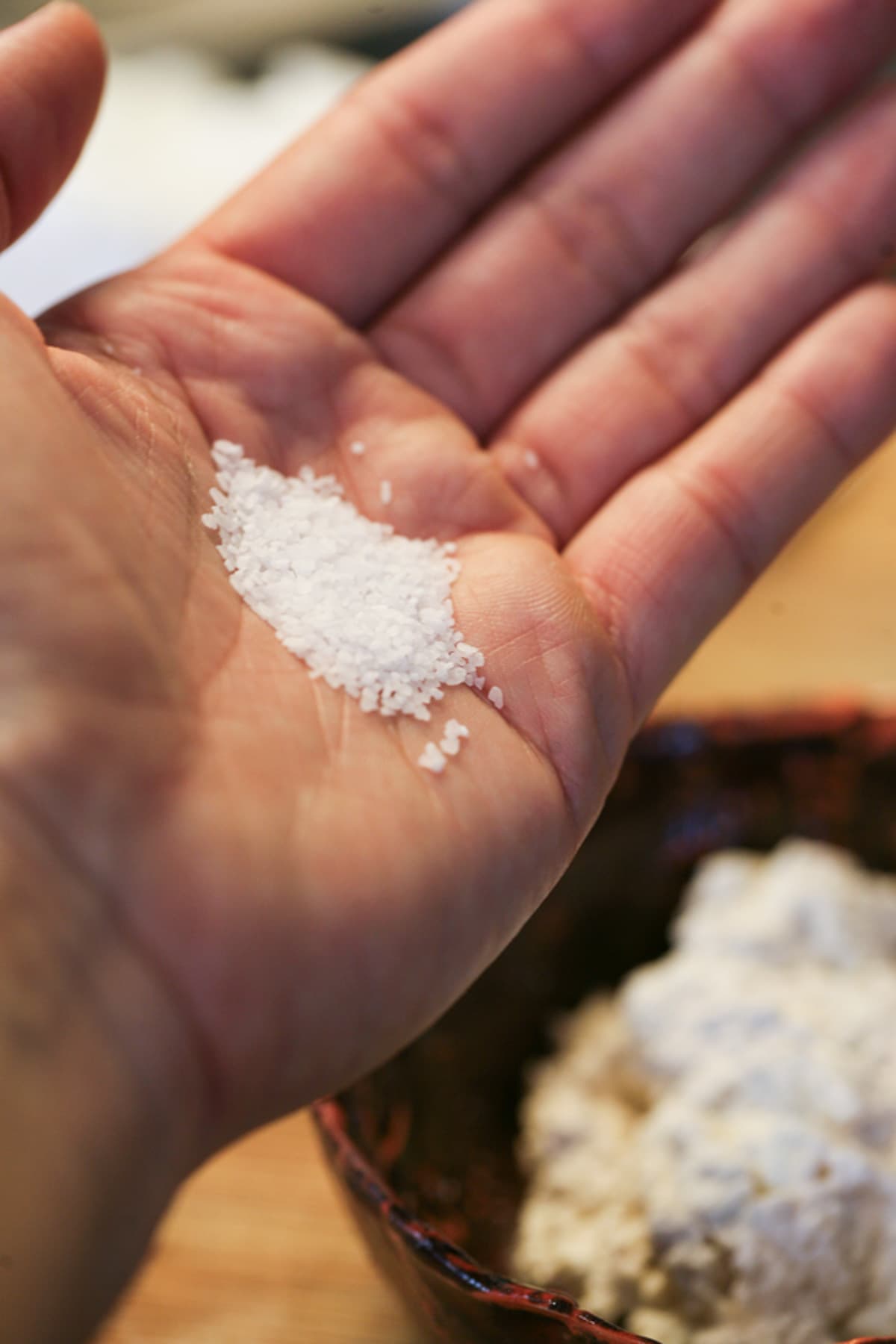
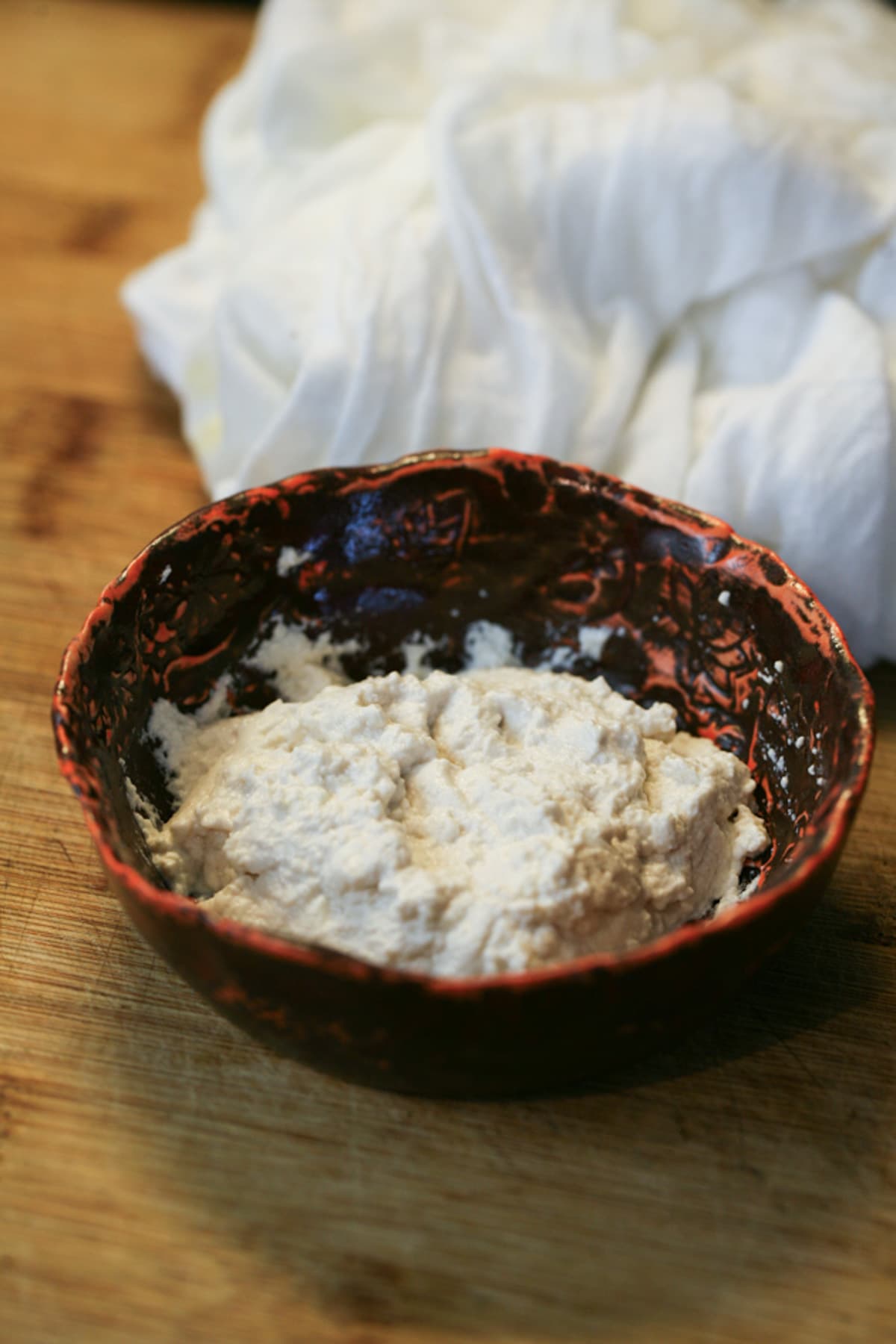
Storing Your Made from Whey Ricotta Cheese…
Before you store your cheese, salt it to your taste. Remember to use non-iodized salt. Sea, Kosher, or cheese salt will do. Mix the salt well into the cheese. Add the cheese to an air-tight container and store it in the fridge.
Serving…
Your made-from-whey ricotta cheese can be served right away, however, like every homemade cheese, it will benefit from a bit of curing in the fridge (24 hours or so should be enough). You can serve and use this ricotta cheese just as you would use any ricotta cheese that you purchase at the store.
Frequently Asked Questions…
Yes. If you make cheese and don’t have time to process the whey right away, feel free to keep it in the fridge for a day or two. Then take it out and heat it according to the recipe.
I’ve never tried but I think that it should freeze well.
You can use the whey leftover after making ricotta from whey to cook with or for baking if it’s not too vinegary for you. You can also add it to healthy smoothies or give it to your animals.
I’ve never tried it but I think that it should work.
Yes, as long as you used your store-bought milk to make cheese without using acids.
Please take a moment to read through the comments below. I make this cheese after making my feta cheese and it always works. It’s creamy and just a bit salty and even though I don’t like ricotta and never buy it at the store, I do love this ricotta! Please comment below and let us know if this worked for you.
Try Pairing this Ricotta Cheese With…
- Sweet Pepper Paste
- Basil Pesto
- Garlic Scape Pesto
- Add it to this Zucchini Casserole
- Use it in these Spinach Patties
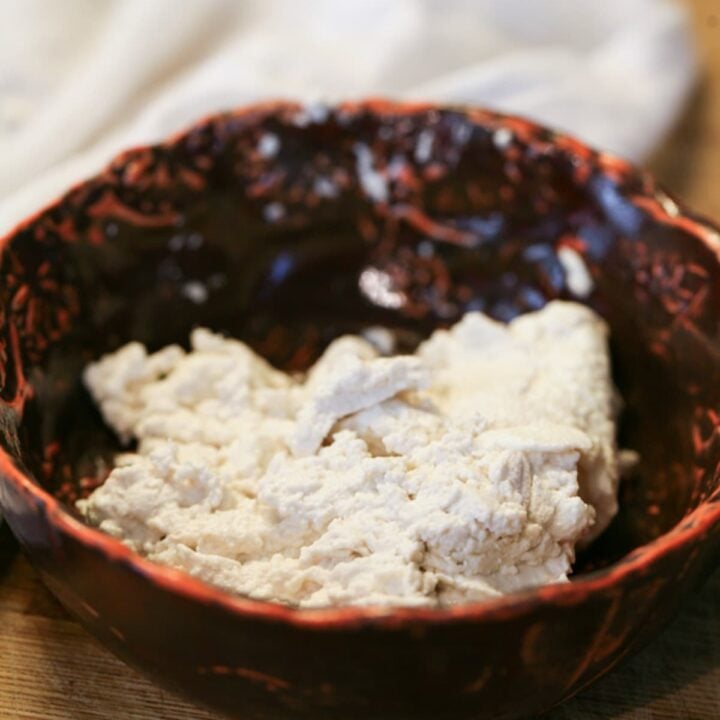
Ricotta From Whey
Delicious ricotta from whey. This ricotta is delicious and easy to make.
Ingredients
- A gallon of whey
- 1/4 cup vinegar (apple cider or distilled white)
- 1/2 teaspoon cheese salt or kosher salt
Instructions
- Heat the whey to 195 degrees Fahrenheit over medium heat. Stir constantly to prevent scorching.
- Remove from heat, add vinegar, stir and set aside for a few minutes.
- Line a colander with cheesecloth, add the whey. Let it drain a couple minutes.
- Collect the ends of the cloth, tie them, and hang to drain anywhere from one hour to a few hours depending on how much whey you are processing.
- Remove the ricotta from the cheesecloth and salt to taste with sea, cheese, or kosher salt.
** This ricotta can only be made from whey that was produced from making cheese without acids like vinegar, lemon juice, or citric acid. If you used vinegar to make your cheese, your cheese produced whey, and you are here trying to follow this recipe to make ricotta, this will not work.
Notes
Frequently Asked Questions...
- Can I keep my whey in the fridge?
Yes. If you make cheese and don’t have time to process the whey right away, feel free to keep it in the fridge for a day or two. Then take it out and heat it according to the recipe. - Can I freeze this ricotta cheese?
I’ve never tried but I think that it should freeze well. - Can I use the leftover whey?
You can use the whey leftover after making ricotta from whey to cook with or for baking if it’s not too vinegary for you. You can also add it to healthy smoothies or give it to your animals. - Can I use whey that was previously frozen?
I’ve never tried it but I think that it should work. - Can I use whey from store-bought milk?
Yes, as long as you used your store-bought milk to make cheese without using acids.
Nutrition Information:
Yield: 6 Serving Size: TablespoonAmount Per Serving: Calories: 60

Hi! I’m Lady Lee. I help homesteaders simplify their homesteading journey while still producing a ton of food! I am a single mother of four, I was born in Israel and raised in an agricultural commune called a Kibbutz. Now I homestead in central NC.

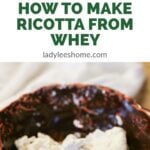
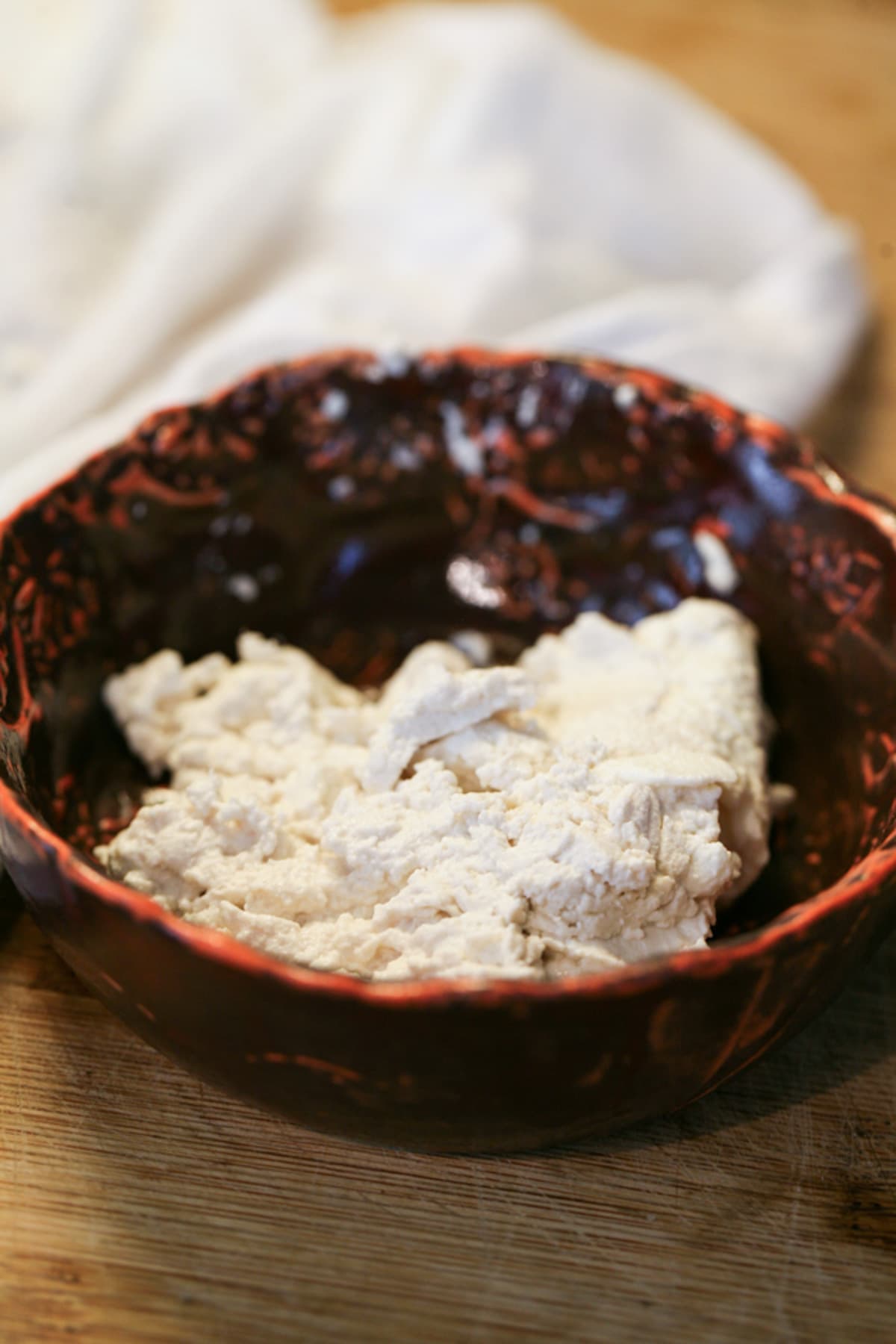

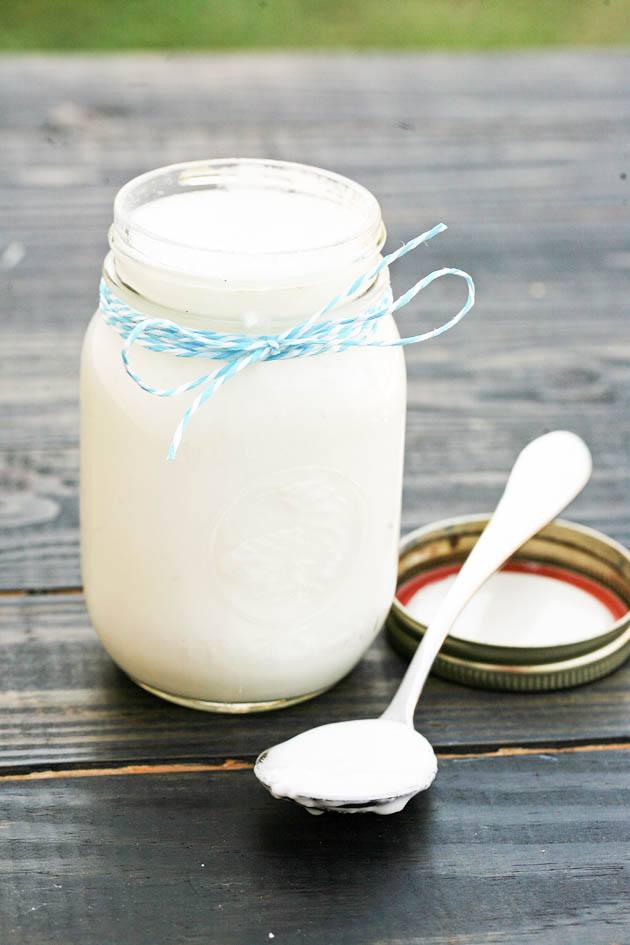
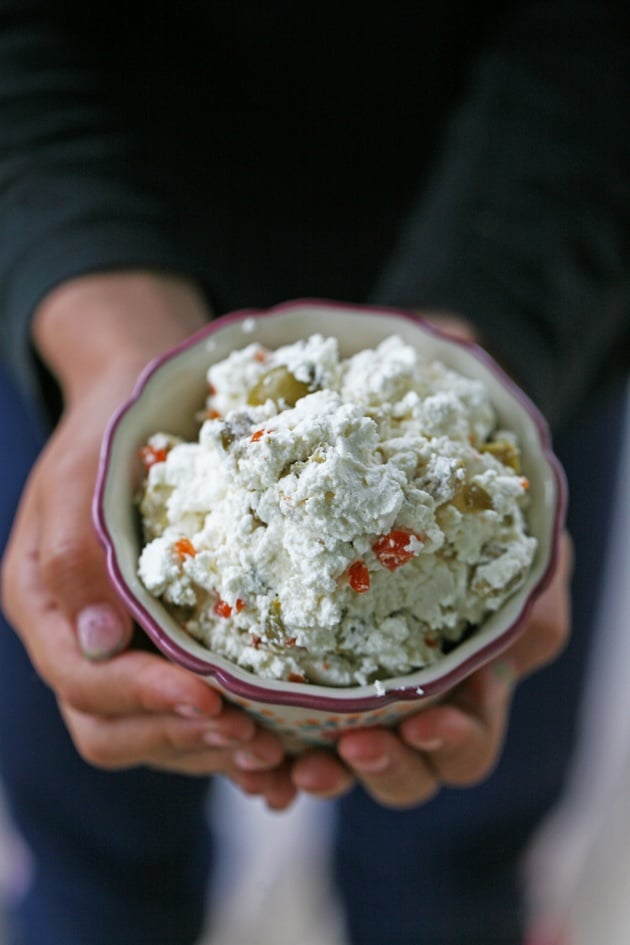
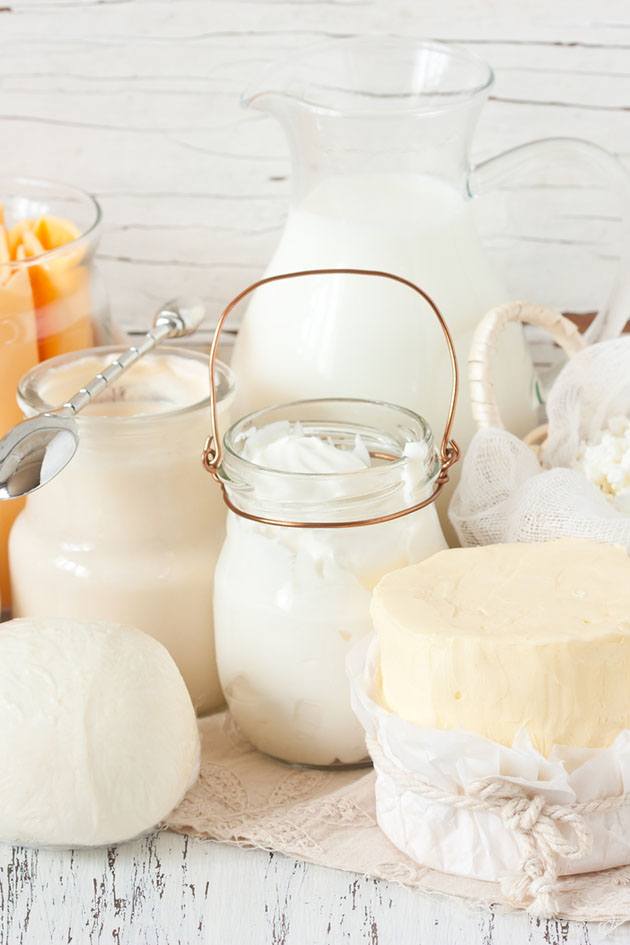
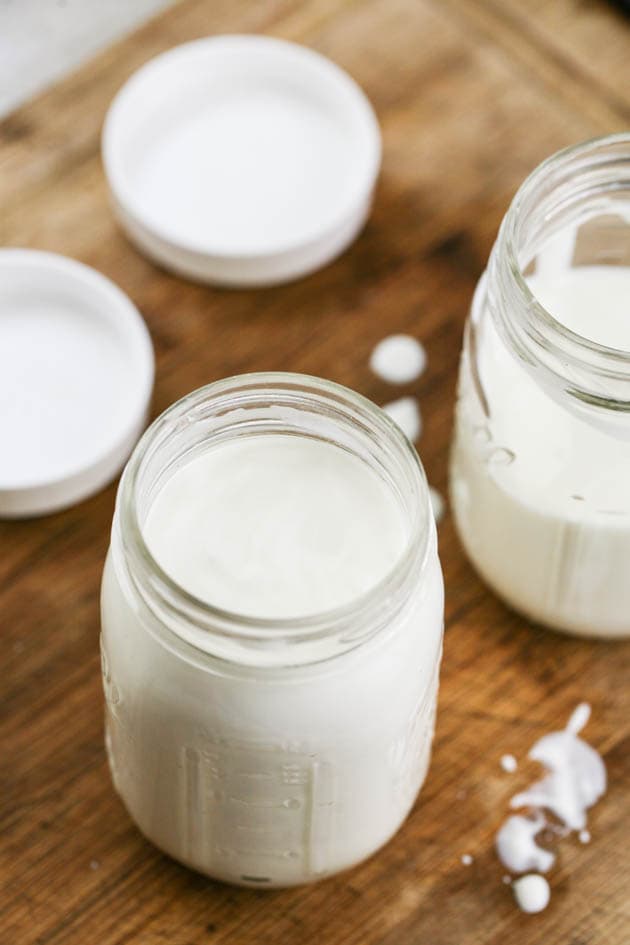
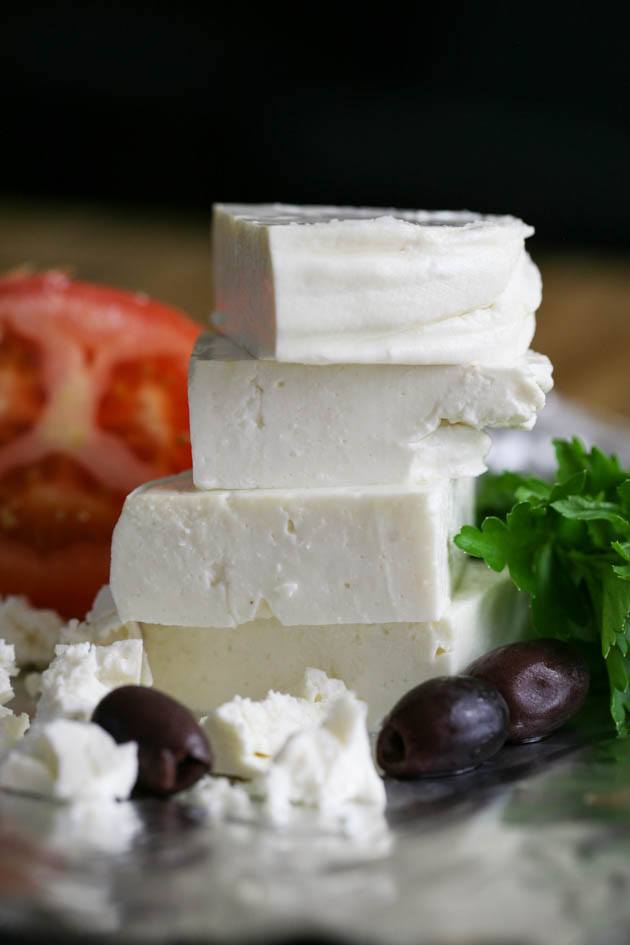
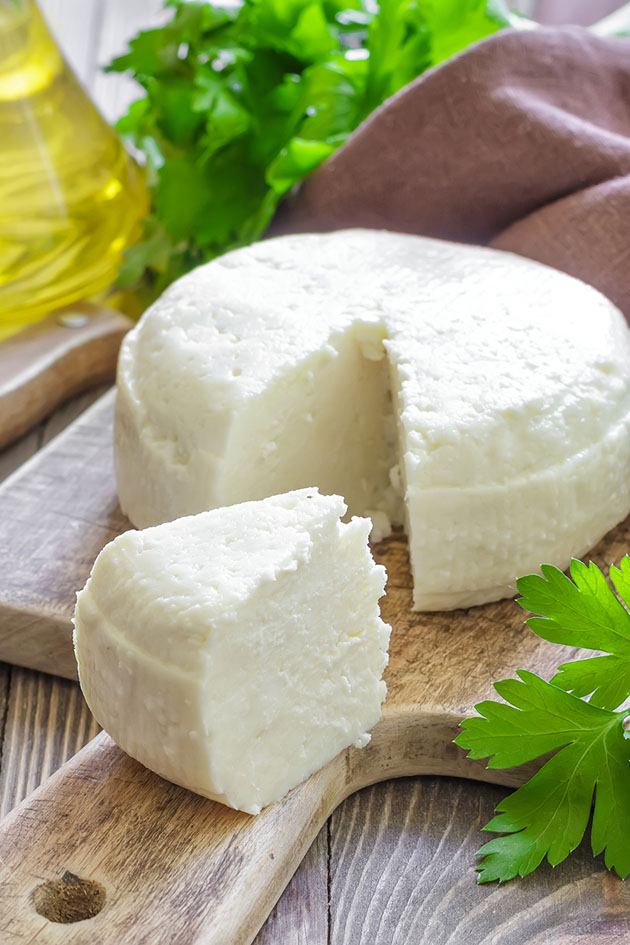
july 2024. Just now reading this post. Interesting. Also read most of the comments. May I comment?
I’ve been making raw goat cheese for 4 years now, never use vinegar or lemon juice. Usually use 3-5 gallons of milk. Always make ricotta from left over whey… and never use vinegar or lemon juice. Always turns out.
My process — I always use cultures for making cheese (cheddar, colby, mozzarella, monterey jack, provolone, gouda).
Always use whey to make ricotta by heating whey to 200 degrees, turn burner off, let sit until cools, probably overnight, pour into strainer lined with dishcloth (not terry), let drain several hours, squeeze out excess whey by hand, and finally freeze or refrigerate. Frozen works fine for lasagna.
Hint… mozzarella needs milk at least 3 days old. And the quick methods are not as good as slow method using culture.
Check out HammockHavenFarms on youtube for lots of goat cheese recipes. (I’m not connected to her, just have learned so much from her.)
Thanks for this! I’ll have to give it a try next time that I make cheese.